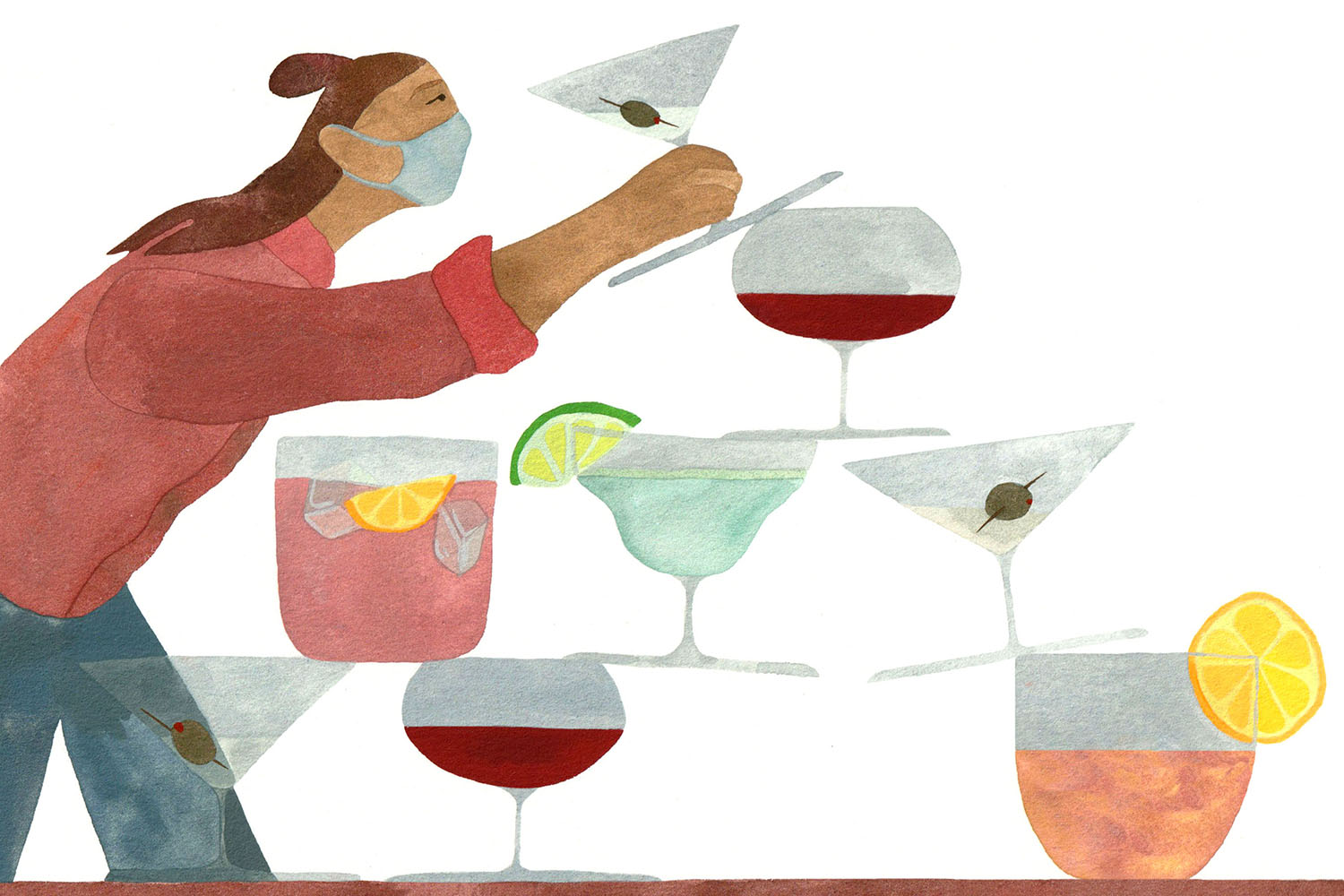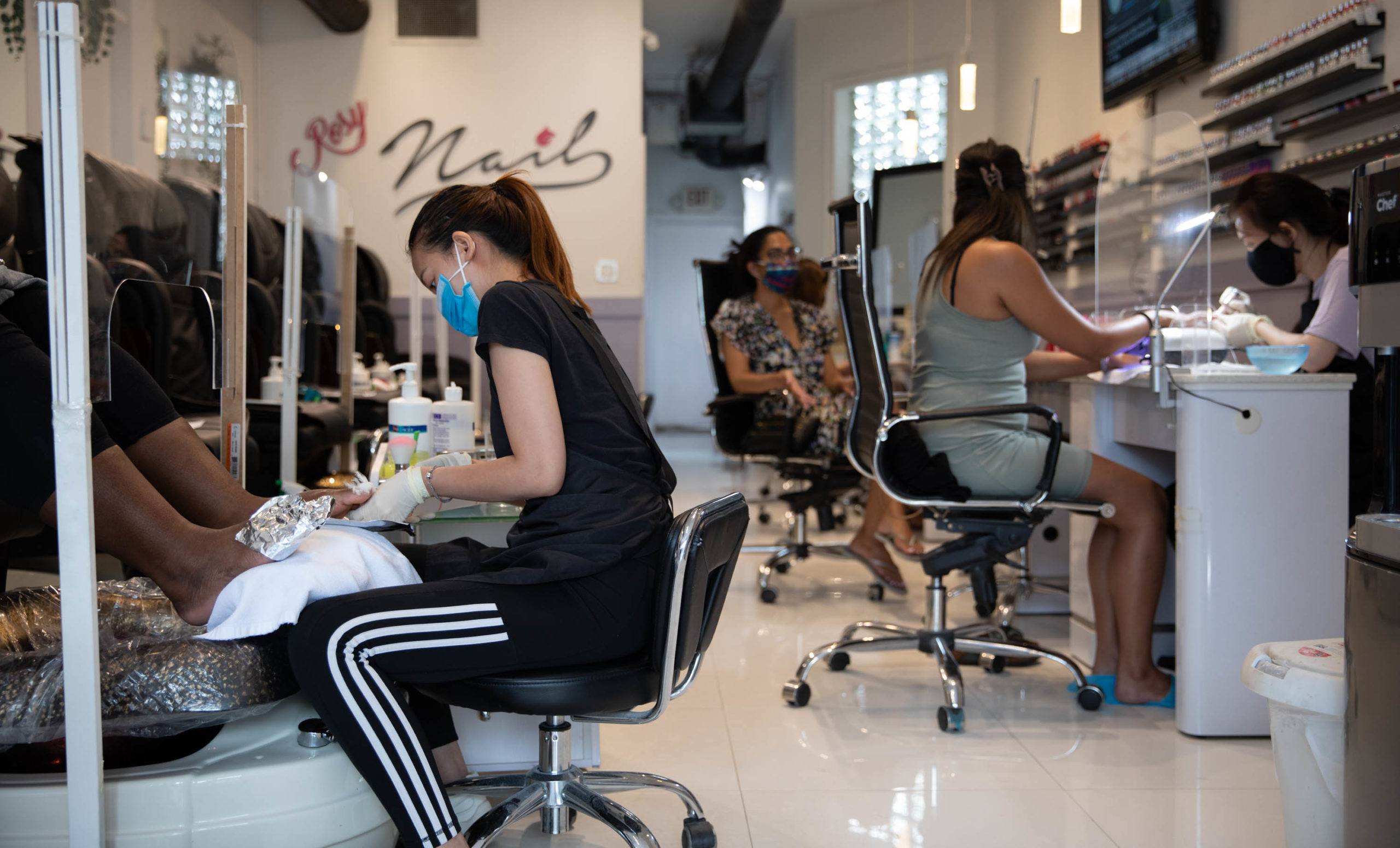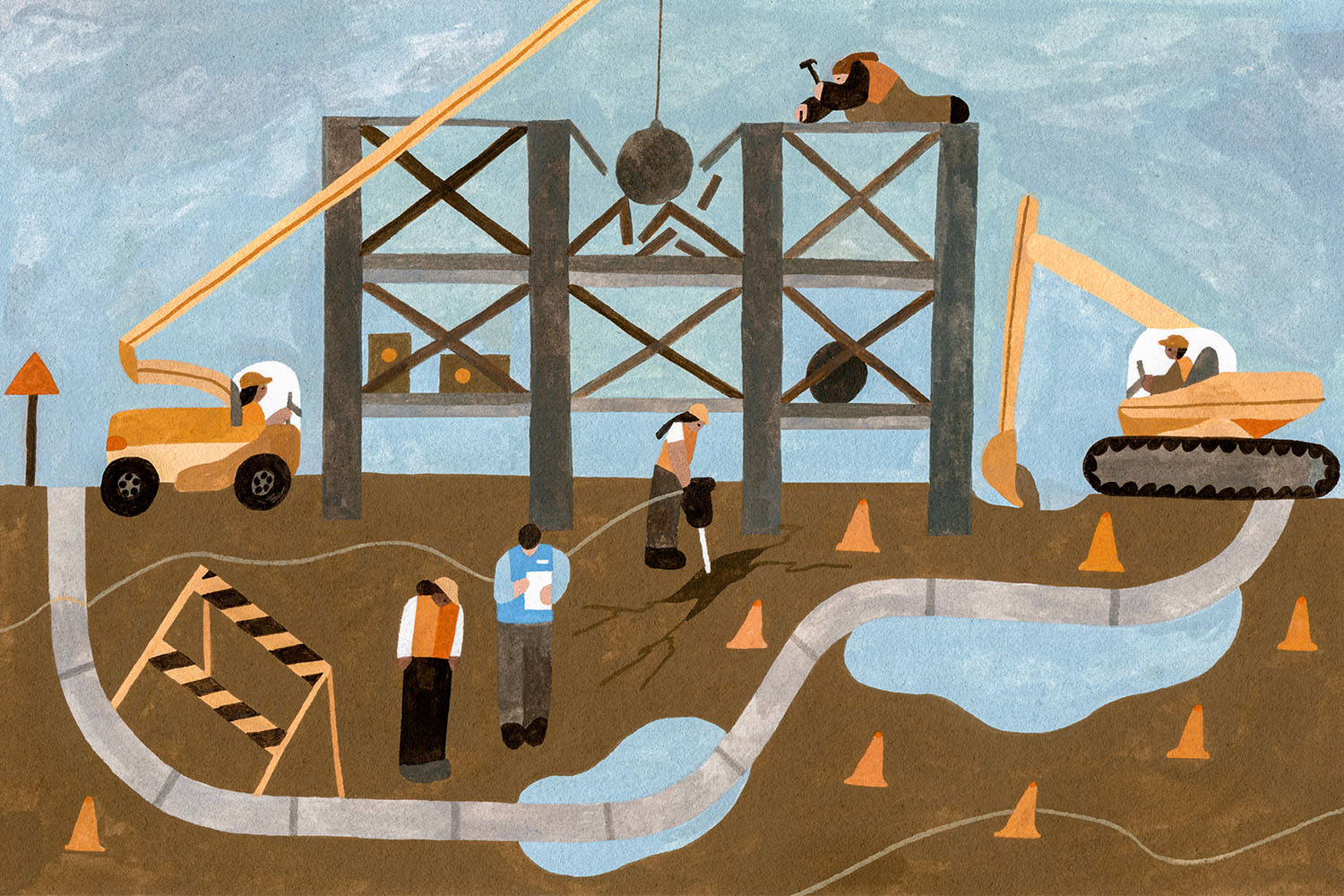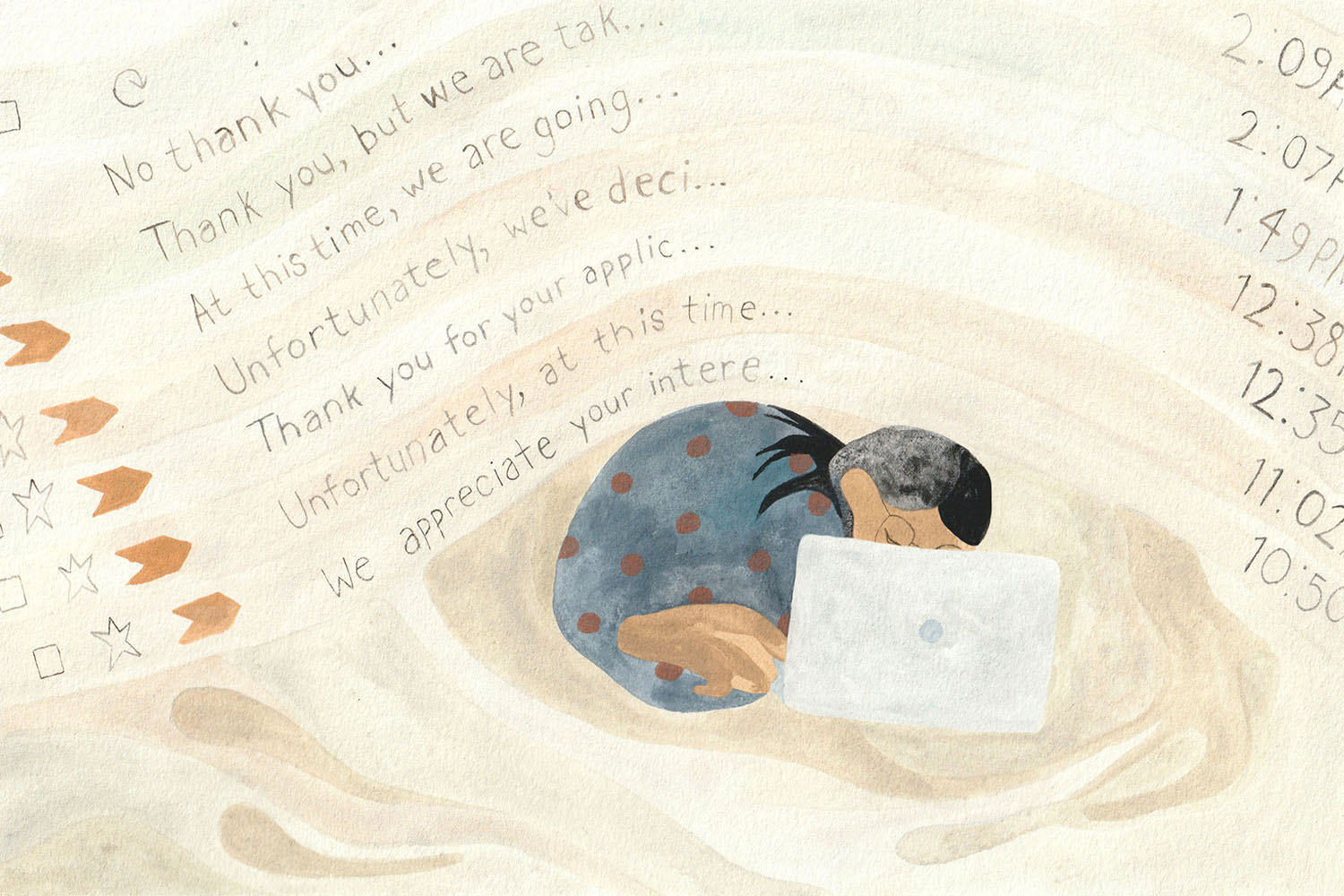

On a Monday afternoon in early July, I receive a phone call from a hiring manager I’ve never met.
He’s seen my resume on LinkedIn and is looking for help at his Yorkville restaurant—a full-time server, five shifts a week. Over the phone, he sounds jovial, but there’s a tinge of desperation in his voice.
When I tell him I’m not looking for full-time work, just one shift a week, he asks if I can reach out to any friends who might be interested. I say I’ll try my best. When I hang up I wrack my brains: I’ve been in the industry for years, but the truth is I can’t think of a single person looking for full-time restaurant work.
This isn’t the first time I’ve gotten this kind of phone call. Restaurant management and owners are scrambling to reassemble the pieces of an industry in shambles. They’re looking to salvage what’s left of Toronto’s waning patio season as the fourth wave rolls across the province.
But increasingly, restaurant staff are choosing not to return. In Restaurants Canada’s most recent Restaurant Outlook Survey, from early July, 80 percent of respondents said they were having difficulty hiring back-of-house staff for their kitchens, and 67 percent faced challenges finding front-of-house workers.
Toronto was home to one of the world’s longest COVID-imposed restaurant shutdowns, with indoor dining closed for over 360 days at one stretch—far longer than cities like London or Paris. During this long pause, workers and owners alike have had the opportunity to grapple with the state of their business. What they found was a broken industry built upon an unsustainable model.
Now, with a staff shortage finally giving returning workers some leverage, the door is open for much-needed improvements in restaurant culture. The potential to create lasting change in a notoriously toxic industry is there for the taking. The challenge now is to get restaurant workers to agree on what that change should look like.
“I don’t believe that we can continue the way it’s been.”
Restaurant work was built on the unstable foundation of tipped labour, a system from feudal Europe that feels antiquated and out of touch with modern economics and labour laws.
In Ontario, servers currently make $12.45 an hour, $1.80 below the regular provincial minimum wage. Pre-pandemic, serving staff relied on consistent gratuities of 15 to 20 percent on meal bills to make up for their lower wages. In smaller independent restaurants, a server might expect to make $50 to $100 in tips a shift; in larger chains, they could make up to $300 or $400 on a busy weekend night.
Tip sharing is often used to bring the wages of kitchen staff closer to those of servers. But in many restaurants it’s an unspoken rule that management also takes a cut, with “house tips” helping to line owners’ pockets. Pre-pandemic, servers walking away from a busy night with hundreds of dollars in cash could shrug off these questionable tip sharing policies. But with most establishments only able to operate at half capacity or less, the drastic drop in sales has exposed the painful realities of working for a sub-minimum hourly wage.
If the old model of relying on tips is broken, however, there’s no consensus about what a better model might look like.
In Facebook groups and other online forums, job postings go up almost daily, while workers push back in comment sections against jobs with low pay or unclear working conditions. Hiring managers, meanwhile, express frustration with job applicants’ attitudes or new hires failing to show up for interviews and scheduled shifts.
Among servers themselves, there’s no agreement about the best way to reform the system. Christine Takano has been working as a bartender and server for over 23 years. She sees the need for updates, like paid sick days, but wants to balance innovative labour policies with old-school tipping for good service—a system that she says has supported her throughout her career.
For Takano, bartending at Markham’s Colonel Mustard restaurant is a full-time job, where the work you put in directly reflects what you get back. She says she feels the arguments against tipping often come from underperforming staff, many of whom are younger and not cut out for challenging work.
“The younger staff, they’re just working to work,” says Takano. “They’re working because their parents told them that they have to work. They’re not working because they want to make the money. They’re the first people that always want to leave. They’re the first people that put their name down for a shift to be cut. They sit around waiting, they’re always on their phones, and then they wonder why they’re not getting tipped.”
But Candice Roslyn, who bartends with The Duke Pub in Toronto’s Financial District, says regardless of an employee’s work ethic, patrons are only willing to pay so much for a meal.
“There are studies that prove that people tip what they tip no matter what, and there’s nothing your service can really do to sway the percentage one way or another,” says Roslyn.
“Any server or bartender you talk to immediately thinks they’re the best at their job… But people just [tip] out of habit. You have to really go above and beyond to get any extra money from a guest.”
Variations of both these arguments seem to spiral around one another endlessly, both online and in person. Roslyn recalls a friend picking a public fight with her at a bar last summer after Roslyn said she would take a pay cut if it meant more equal distribution of money between serving and kitchen staff. “People are very heated because it is asking them to give up a huge amount of money,” she says.
The absence of cohesion between restaurant workers often works in the favour of owners, says Matias Marin, owner of Houndstooth bar on College Street. “Bad business owners, they’re not stupid,” says Marin. A poorly-constructed tip sharing arrangement can cause tension and in-fighting between staff. And pitting workers against one another, he says, is “a mechanism for controlling their staff and a way to disempower them.”
Typing the words “restaurant manager” into job search website Indeed and searching within 25 kilometres of Toronto brings you 368 search results for jobs with estimated salaries of $30,000. There are 165 results around the $50,000 mark. After $70,000, the number of search results drops dramatically. There are only 6 results for a yearly salary of $90,000 or above.
In the restaurant world, there’s an understanding that full-time for managers generally exceeds a standard 40-hour work week. 12-hour daily shifts are common for line cooks and front- and back-of-house managers, and many staff put in this work out of a sense of duty without receiving proper pay. The long hours and lack of high-paid jobs on offer to even the most talented restaurant workers means that, for most, the industry is only a temporary stop in a career, with no hope of real advancement.
Jason Ruggeberg bartends at Cocktail Bar on Dundas West. For Ruggeberg, bartending is fun, a way to flex his social muscles and make more money than in his previous role as a line cook. Ruggeberg did a brief stint as a general manager at another restaurant and found the work limiting.
“It’s a lot of hours and I don’t feel that you are compensated appropriately for the amount of time and stress that it creates,” he says.
“Realistically, if I’m going to work a 60-hour week, I’d like to be making more than…like, I’ve seen people offer 40k a year for a [general manager], and that’s absurd,” says Ruggeberg.
Beyond the difficulty of advancement, the restaurant industry is an incubator for burnout. Formal meal breaks on serving shifts are minimal, with staff often eating on the go. At small establishments, staff generally only leave the floor to smoke or use the washroom. Hours are long. The dreaded “clopen”—in which the staff member who closed one night opens the next day—often violates the legal requirement for staff to be given at least eight hours of rest between shifts in Ontario.
Unmindful drinking has become built into the framework of restaurant work, too. A good night equals congratulatory beverages for staff; a bad night means a round of consolation shots is in order.
Hassel Aviles is executive director of the organization Not 9 to 5, a mental health advocacy organization for restaurant workers. She’s made it her mission to address the substance use and mental health difficulties of people in the industry. “I don’t believe that we can continue the way it’s been,” Aviles says.
Before the pandemic, the organization surveyed restaurant workers about their wellbeing. Ninety percent of respondents said they lived with mental health or substance use problems. Experiencing a collective trauma like COVID, says Aviles, only amplifies the problem.
“There’s a lot that happens in your body when you’re exposed to high levels of pressure like that repetitively over a prolonged period of time,” says Aviles. “Your body goes into a stress response system and your nervous system is not activated, and so oftentimes you’re in a fight or flight state.” When that happens for days, months and years, without proper sleep or time for recovery, Aviles says, the issue becomes chronic.
In a “customer is always right” environment, service staff also operate as workers first, people second. “Constantly being told to not basically show up as a human, you’re asking people to leave their humanity at the door, and that has massive physical and mental health consequences,” says Aviles.
For many workers living inside this cycle of burnout, the pandemic finally created some breathing room.
“The schedule is untenable if you want to be a semi-normal human with a family, or you know, see somebody who isn’t in the industry,” says Ruggeberg. “It’s very tough.”
Ruggeberg says he plans to pivot out of working in service to attend law school. This plan was long in the making, but the pandemic gave him a nudge.
“I would say COVID kind of catalysed the decision a little bit,” he says. “It just gave me some time away to get a bit more perspective.”
“I know that I was exploited. But I also feel like it helped shape who I am, for better or worse.”
Workers often discuss the “trap” of the restaurant industry. For young employees without postsecondary education, it can be disproportionately well-paid. And the line between exploitation and challenging-but-character-building work is hard to identify.
Food writer and former restaurant cook Corey Mintz says that conflicting ideas about what constitutes exploitative labour don’t just exist between workers, but create internal dichotomies as well.
“I’m probably one of those people who shares both perspectives in my head,” says Mintz. “I know that I was exploited. But I also feel like it helped shape who I am, for better or worse.”
During school, I supported myself by working in the restaurant business because I needed to. But somewhere between the long hours, unreasonable off-menu customer requests, and poor sleep schedule, I found myself continuing with this type of work because I genuinely enjoyed it.
In a busy sports bar, major corporate chain, or hole-in-the-wall Italian wine bar, I’ve managed to find joy in the small pleasures of the industry. Taking a minute to scream into the void of the walk-in fridge during a stressful service. Being gifted a kitchen “mistake” of slightly burnt nachos. I love the brisk pace, the constant flow that makes time fly.
I didn’t end up taking that job in Yorkville, but I did take another one. At a mid-size coffee shop and bar by the Harbourfront, I enjoy my days working on the patio, watching the boats float in.
As restaurants have locked down, reopened, locked down, and opened again, I’ve been surprised to see the familiar faces of those willing to navigate whatever new restrictions are in place to sit at a restaurant table. Some are daily visitors—there to see their favourite server or bartender, to have a laugh, to reestablish the small routines that keep them connected to the outside world.
My one shift a week quickly turned into two. Then three. Now I’m nearly back to full time, and wondering how sustainable it is to keep working in this industry.
There may not be a perfect solution to this system, but voices from all levels of the restaurant world are calling out for a different, better, more equitable way of doing things. From fine dining to fast food, the need for change is tangible. Not seizing the momentum to create necessary reforms is a missed opportunity. This industry is broken, but those who love it know it’s worth trying to fix.










